Aufbuschen auf der Unteren Firstalm – und vom Leben einer Sennerin
Bei meiner Ankunft auf der Unteren Firstalm werde ich von Anna-Lena, der jungen Sennerin, begrüßt. Sie ist von Beruf her eigentlich Schreinerin, kommt ursprünglich aus einer Landwirtschaft vom Irschenberg und hat diesen Sommer mit 56 Jungviechern, 2 Stuten und einem Fohlen, 24 Schafen, 2 Schweinen, 3 Hühnern und einem Gockel auf der Alm verbracht. Es war schon immer ihr Traum Almerin zu sein, erzählt sie mir, den sie sich durch eine Freistellung von der Arbeit heuer verwirklichen konnte. Besonders gereizt hat sie der enge Kontakt mit den Tieren, mal raus aus dem Alltag zu kommen und in der Natur zu sein.
So ein Sennerinnen-Leben ist gar nicht so leicht, erfahre ich. Ihr Arbeitstag ist angefüllt mit:
Im Stall die kleinen Kälber füttern und waschen.
Die Säue versorgen.
Nach den Kälbern auf der Weide schauen, ob alle gesund und ruhig sind.
Im schweren Rucksack Mineralfutter und Salz sowie Flickzeug für die Zäune mit sich führen.
Zäune kontrollieren und ausbessern.
Tränken säubern und vieles mehr.
Seit Mitte August bindet Anna-Lena außerdem Papierröschen zum Schmücken der Buschen für den Almabtrieb.
Außerdem hat sie in den letzten 14 Tagen Almrausch gepflückt und gebunden.
Auch die Buschen zum Schmücken der Tiere hat sie gebunden und mit bunten Reserln (dt. Röschen) geschmückt.
Zu ihren schönsten Erlebnissen gehören die Geburten der 7 Lamperl (dt. Lämmer). Aber Anna-Lena wurde auch vom Schafbock umgeworfen, ein Jungvieh hatte sich vertreten, ein Kalb hatte eine Kolik und der Gockel wurde böse von einem frei laufenden Hund gebissen. „Die Hunde sind tatsächlich ein Problem“, erzählt mir die Sennerin, bzw. eher die Hundehalter, welche die Tiere nicht anleinen und es dadurch immer wieder zu einer Jagd auf Schafe und Hühner kommt.
Die Kälber kennen einen mit der Zeit, erfahre ich. „Angst muss man nicht vor den Tieren haben, aber Respekt sollte man schon haben“, sagt die Almerin.
Sie musste sich erst daran gewöhnen sich allein zum Essen zu setzen, erzählt sie mir. Aber wenn dann am Abend die Ruhe auf der Alm einkehrt, die Wanderer wieder im Tal sind und man besonders im August noch lange draußen sitzen bleiben kann, ist es ein Traum.
Für den Almabtrieb werden die Kühe mit Buschen, Kreuzen, einer Krone, Stirnkranzl sowie sogenannten Fotzenkranzl, welche um Maul und Hörner drapiert werden, geschmückt. 40 Blumen werden etwa pro Buschen benötigt. Außerdem kommen hier die wunderschönen Glocken zum Einsatz, welche zum Teil seit Generationen in der Familie weitergegeben werden. Hartl Markhauser, welcher die Alm bewirtschaftet, zeigt mir die Glocken, welche er und sein Vater zu ihrer Hochzeit und besonderen Geburtstagen geschenkt bekommen haben. Er sitzt neben mir auf der Bank und poliert sie, damit sie am kommenden Samstag wunderschön glänzen. Im normalen Almbetrieb tragen die Kühe übrigens kleine Glocken, welche den Sinn haben, sie wiederzufinden, falls sie sich verirrt haben. Die großen Glocken sind dem Almabtrieb vorbehalten. „Die Kühe stehen übrigens auf ihre „Alltags“-Glocken und verteidigen sie sogar“, verrät mir Hartl.
Morgen (30. September 2017) findet der Almabtrieb von der Unteren Firstalm über die alte Spitzingseestraße bis nach Fischhausen zum Anderl-Bauernhof der Familie Markhauser statt. 7-8 Erwachsene und 5-6 Kinder sind daran beteiligt. Besonders die Kinder sind schon ganz aufgeregt und freuen sich darauf. Je nach Dauer des Schmückens geht es kurz vor 11 Uhr los mit dem Abtrieb ins Tal und damit dem Einläuten der Herbstsaison.
Geborene Münchnerin und seit vielen Jahren begeisterte „Wahl-Schlierseerin“ Personaldiagnostikerin, Trainerin, Seminarleiterin, Hypno- und Gesprächstherapeutin, Hofbetreuerin im altbayerischen Dorf und vor allem Hobby-Fotografin.
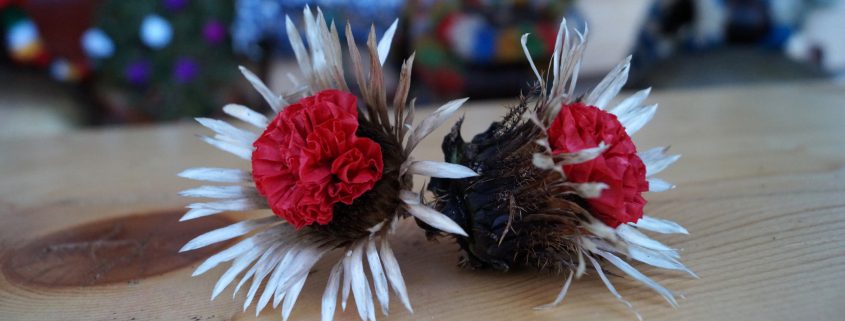
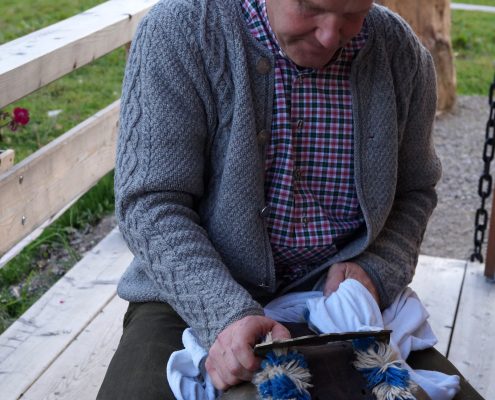
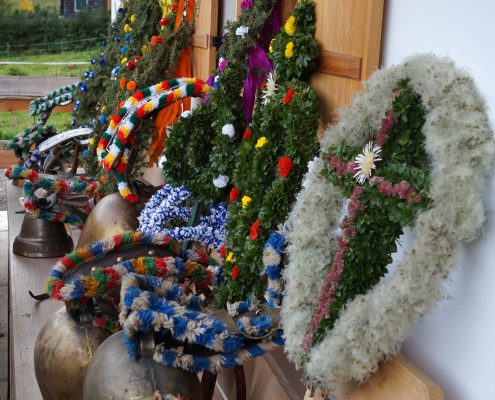

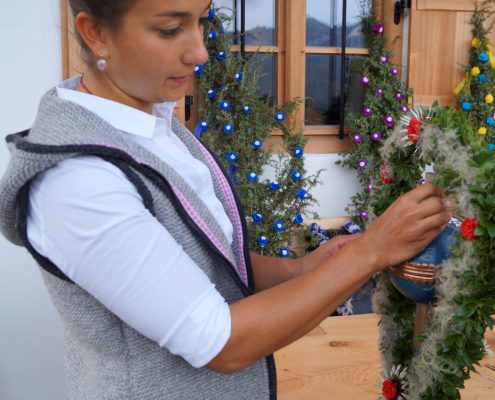
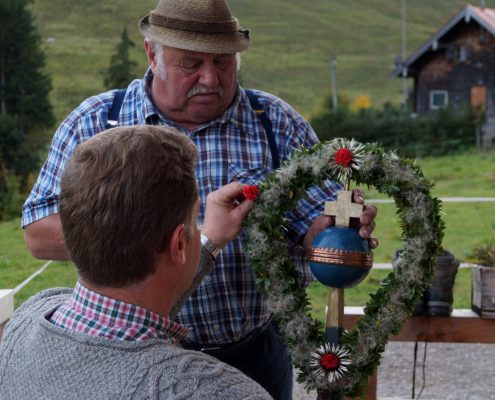



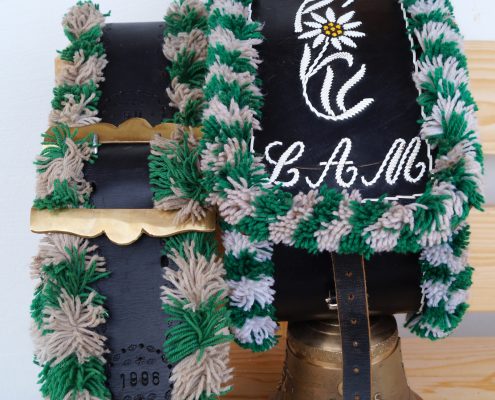
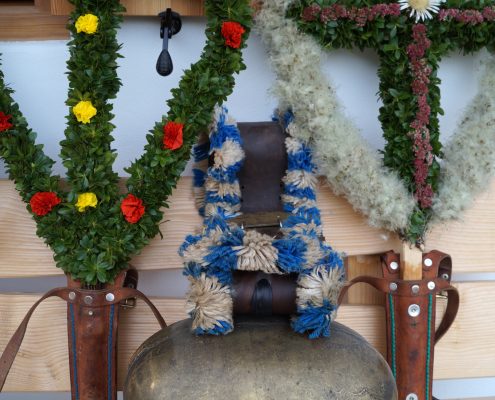
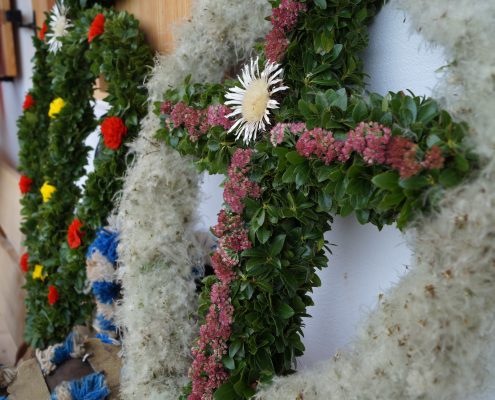
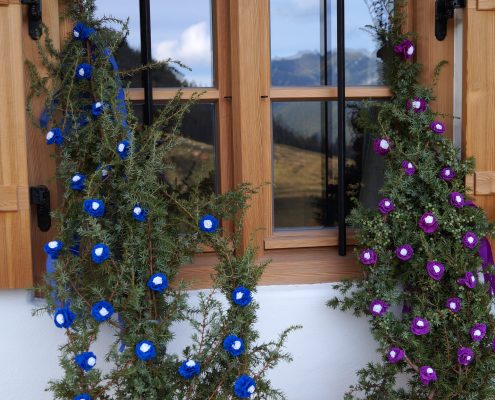
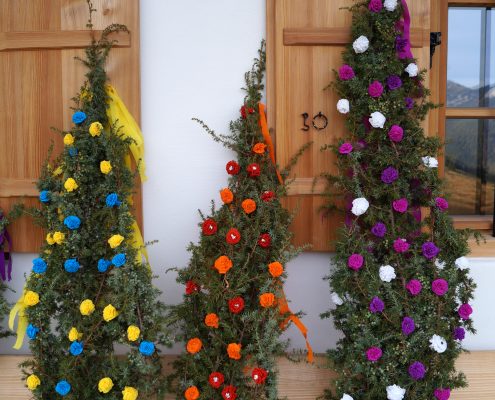
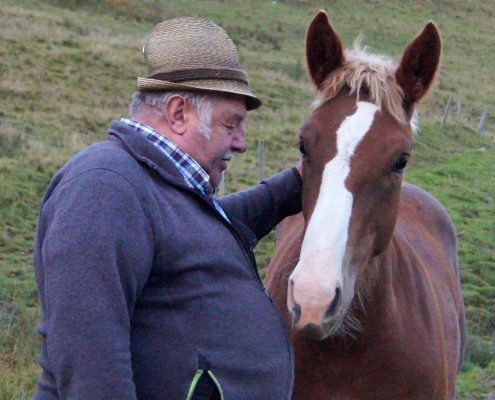
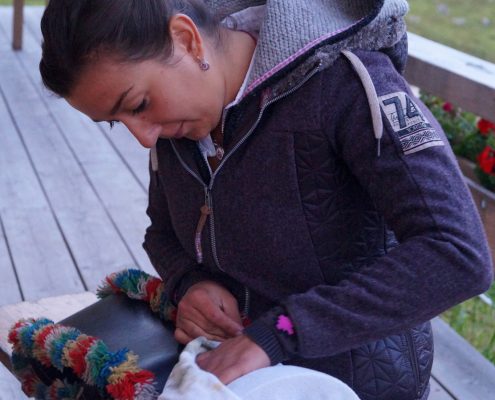
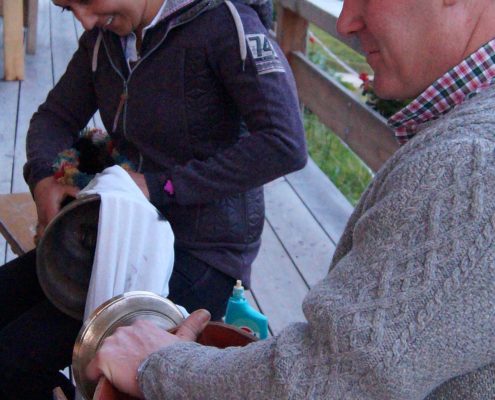
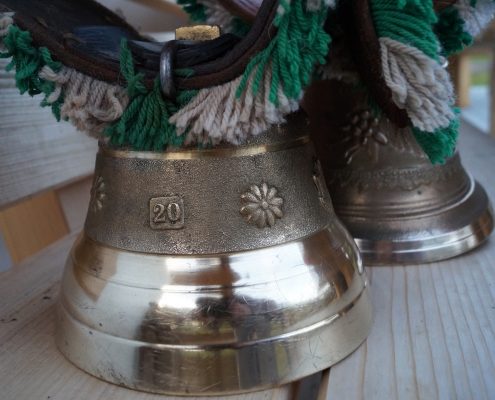
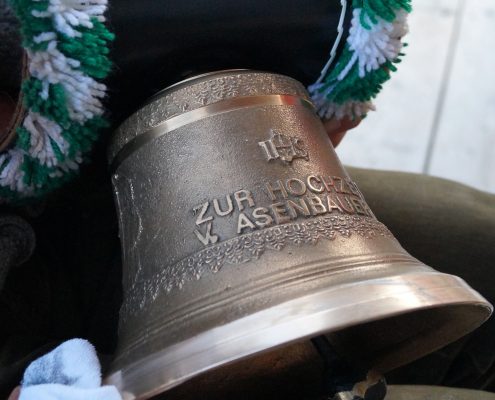
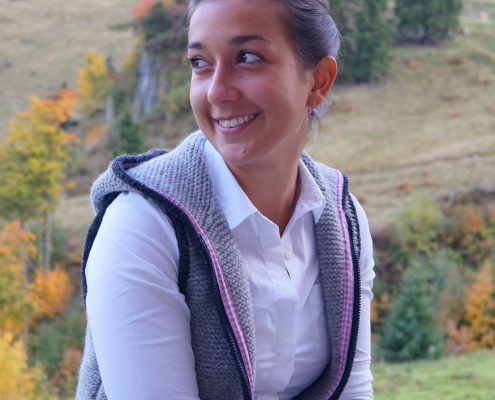
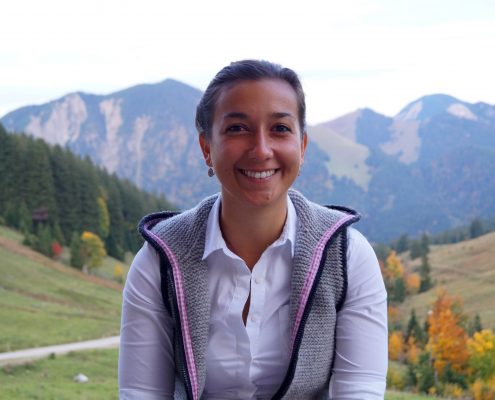
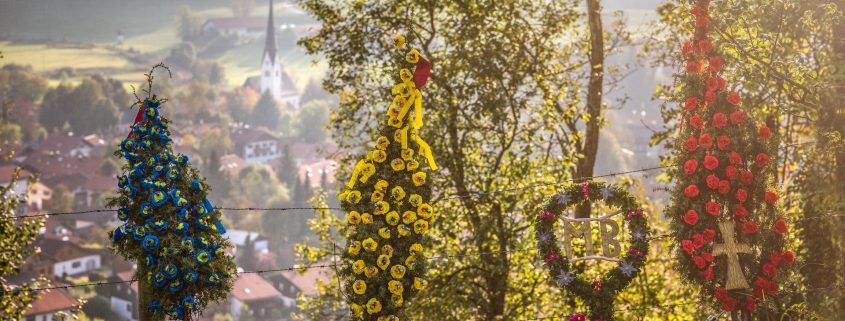
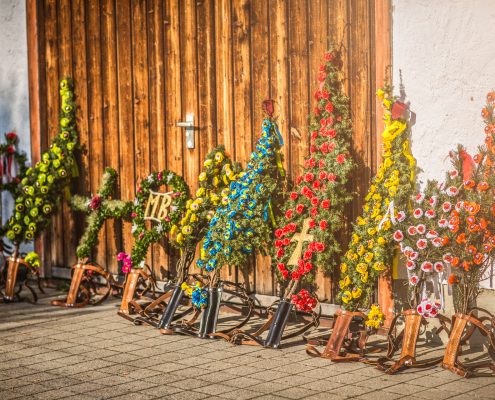
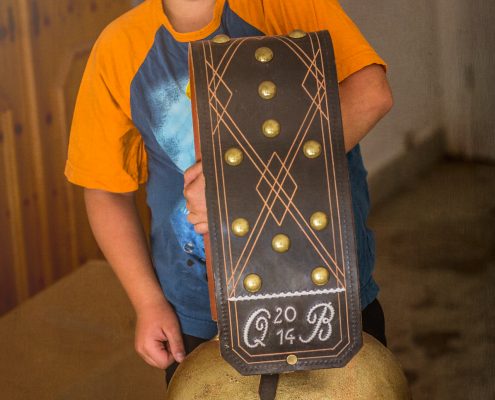
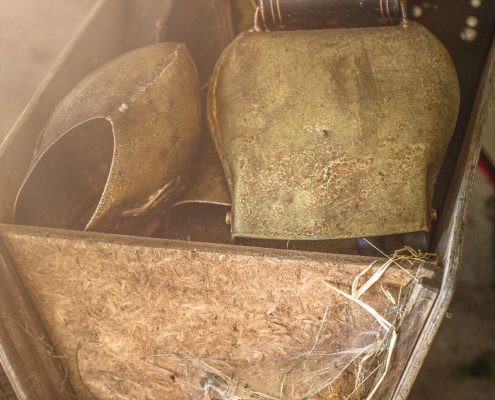
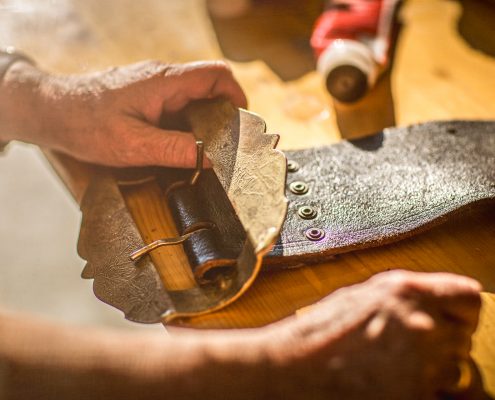
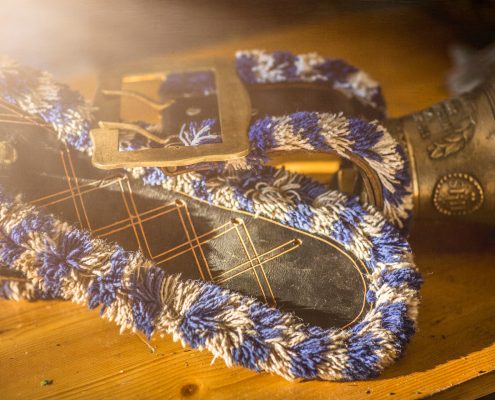
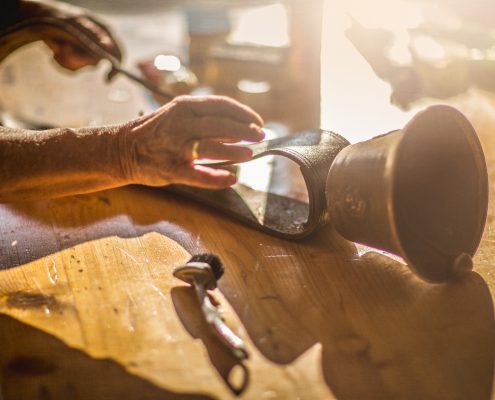
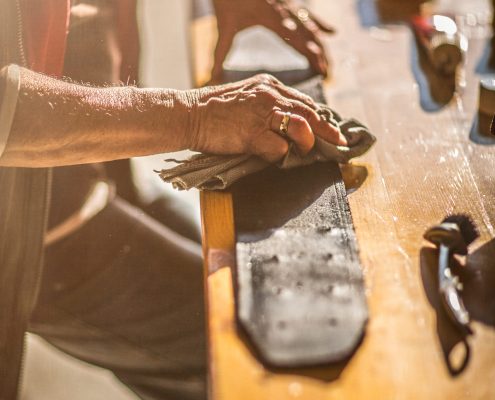
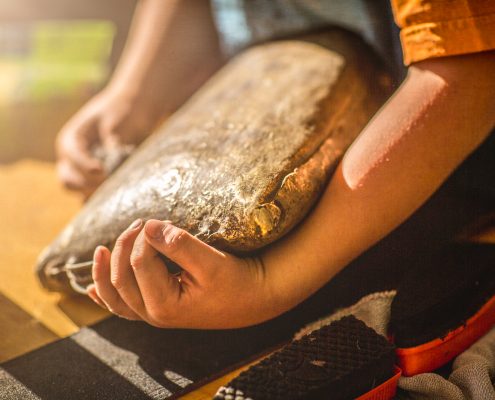
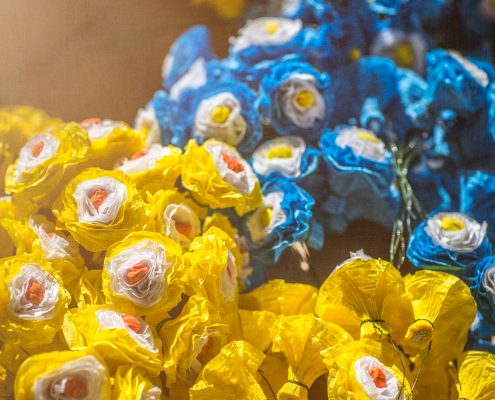
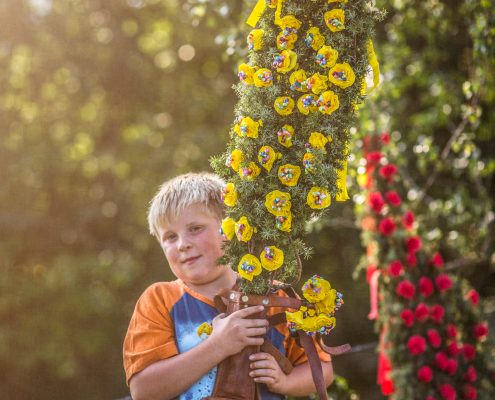
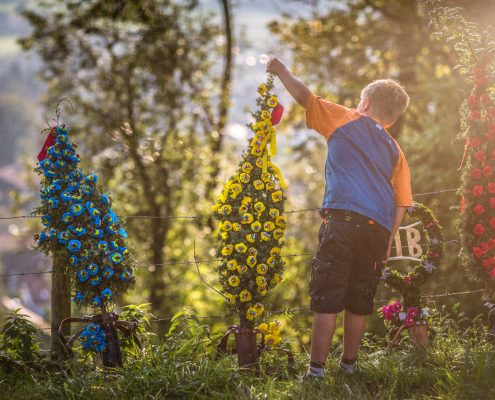
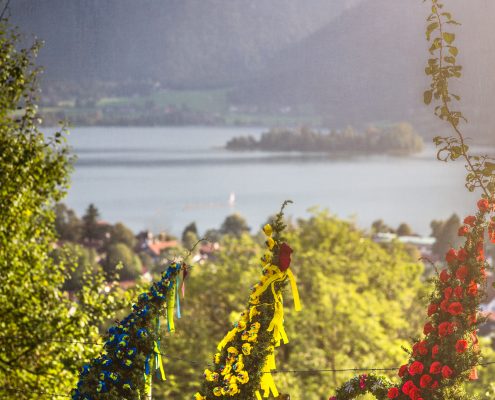
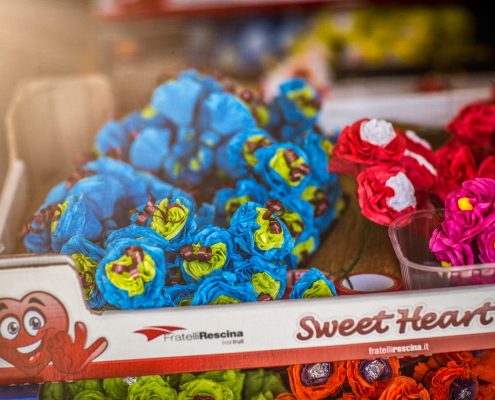
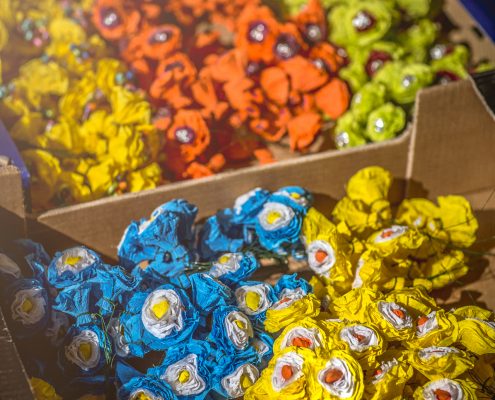
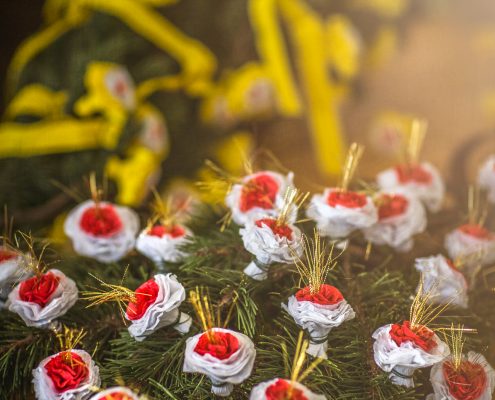
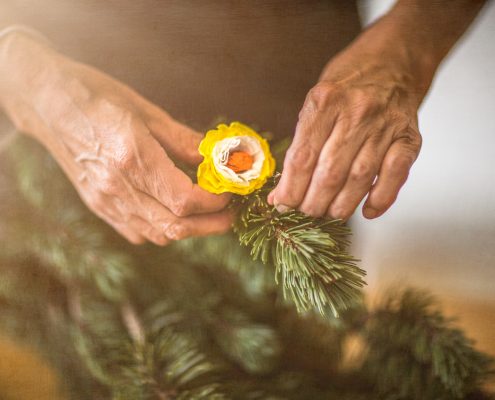
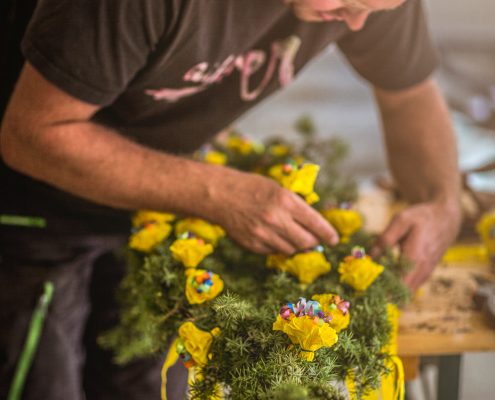
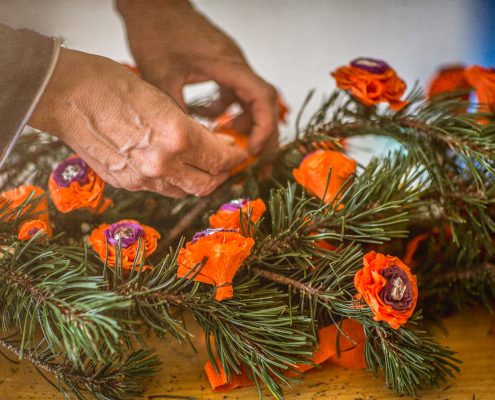
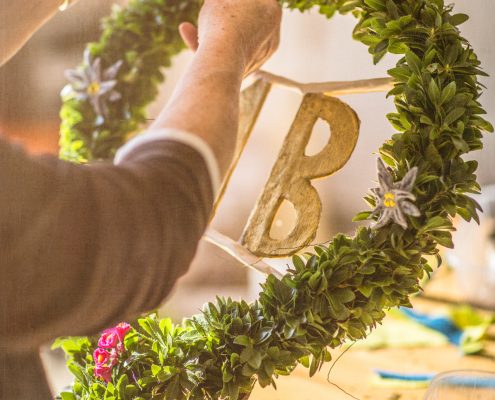
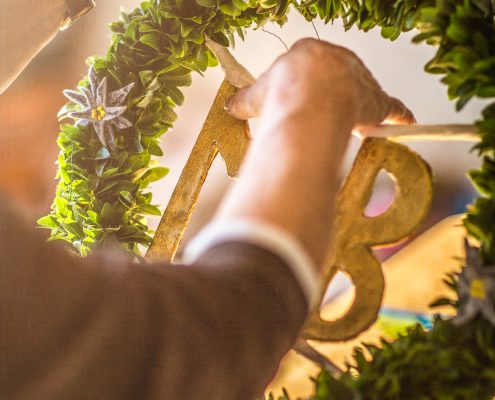
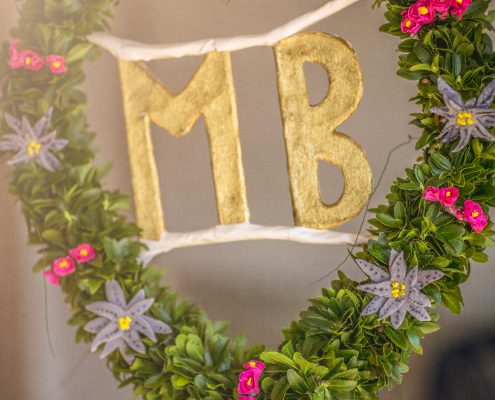

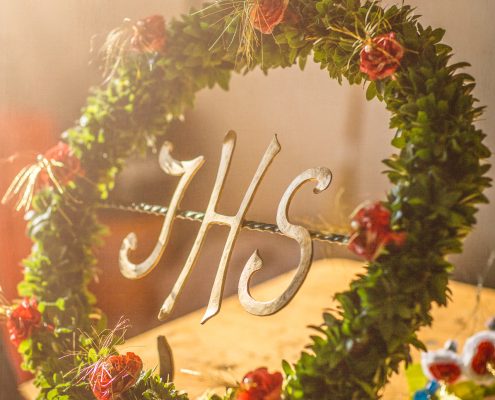
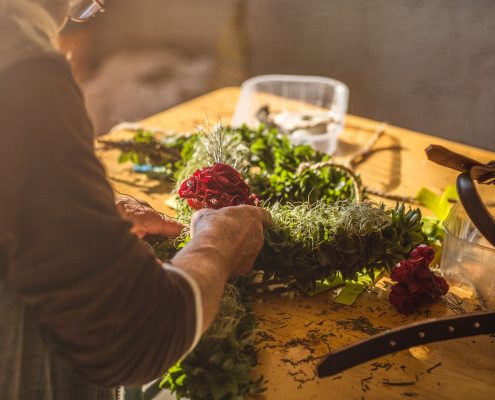
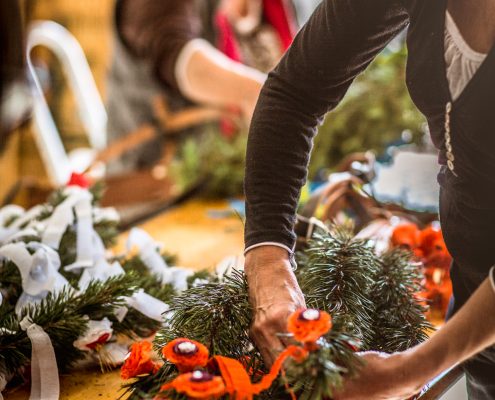
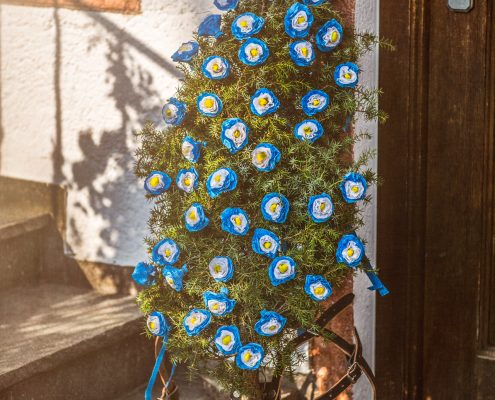
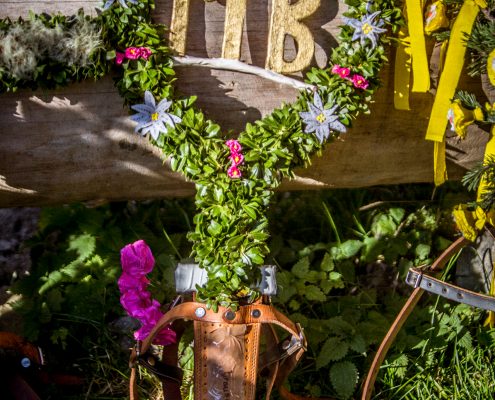
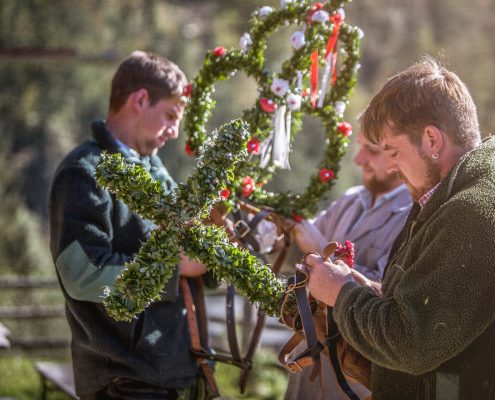
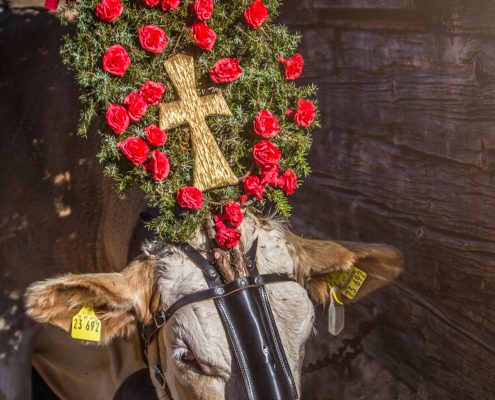
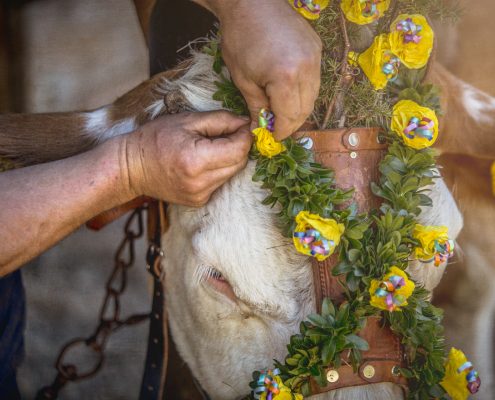
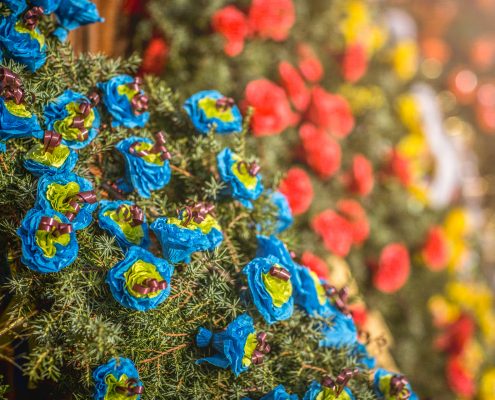
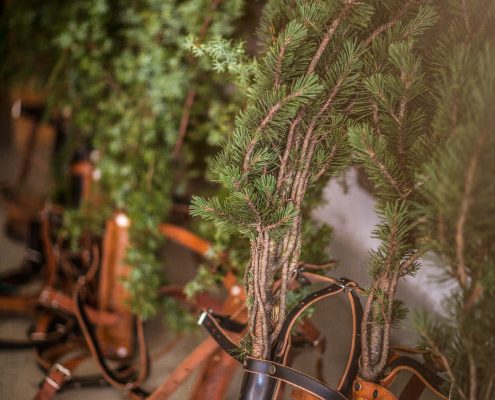
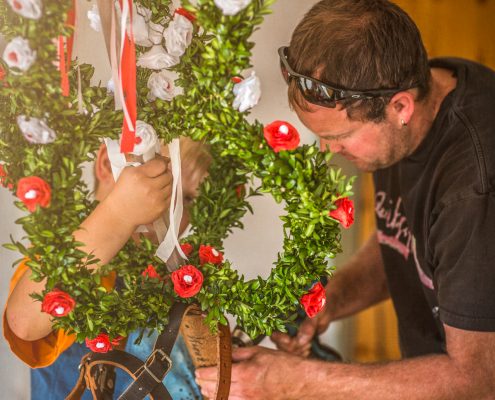
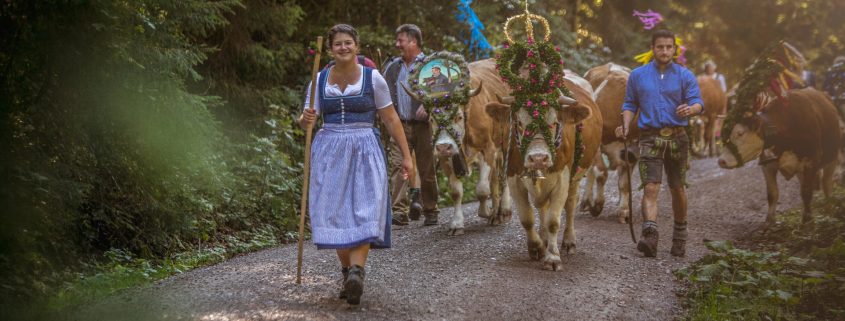
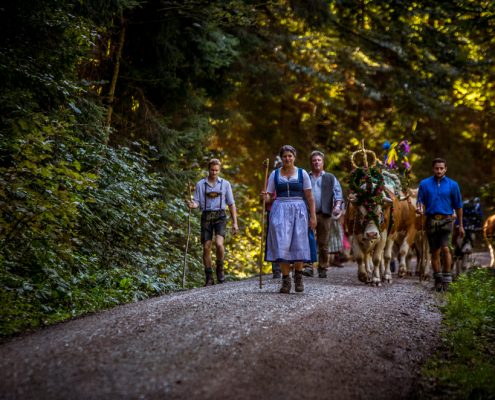
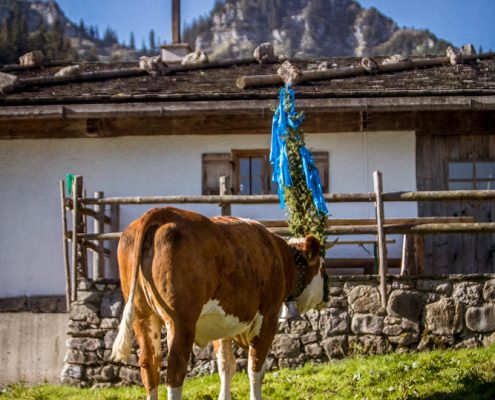
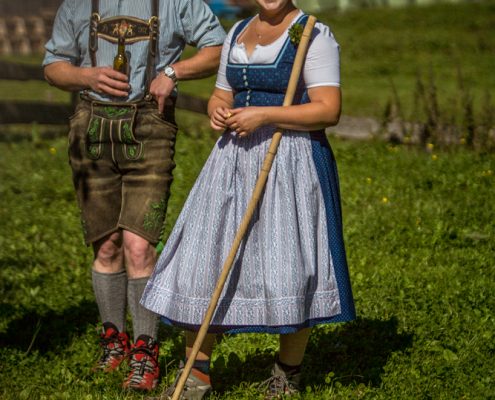
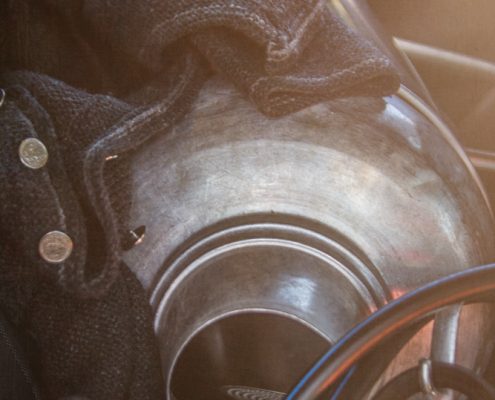
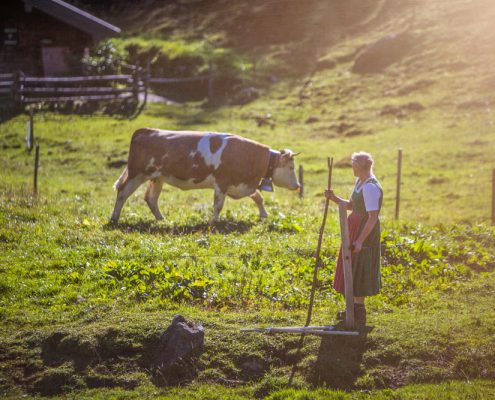
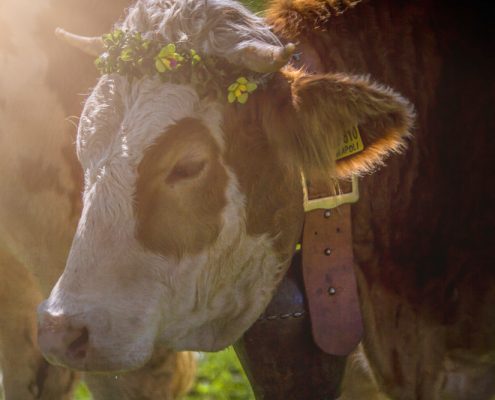
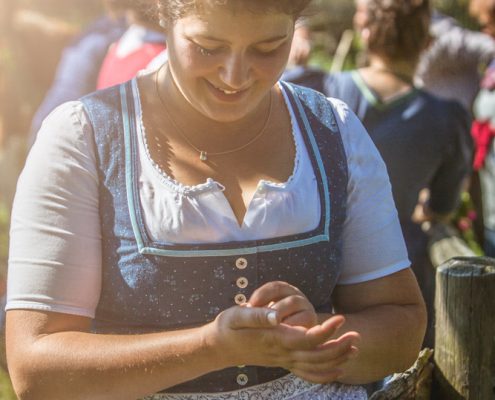
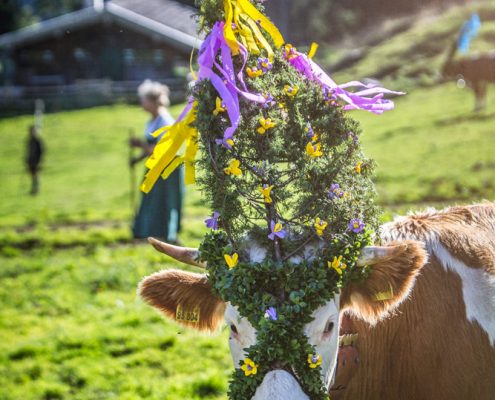

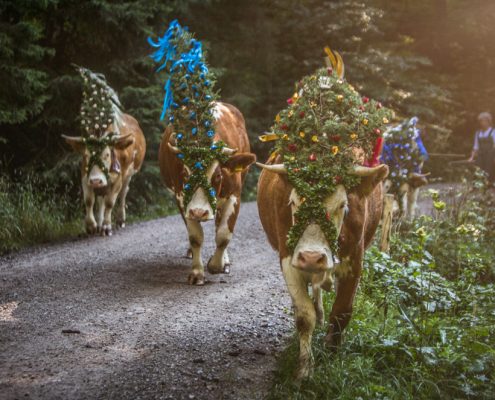
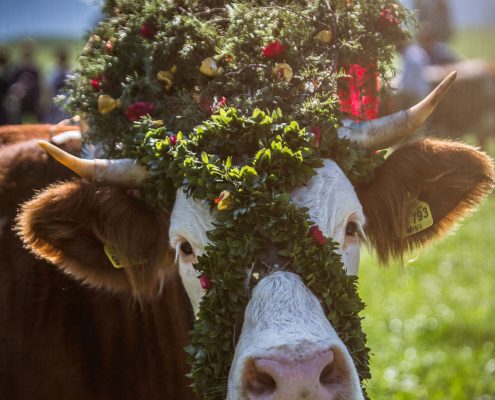
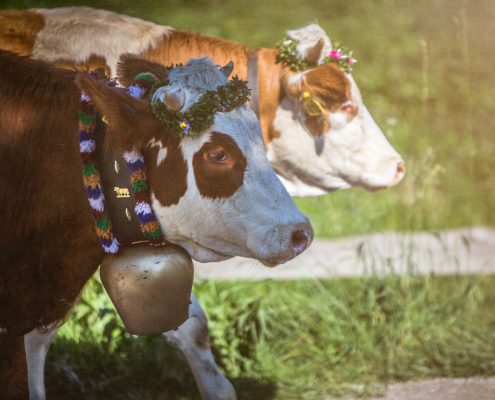
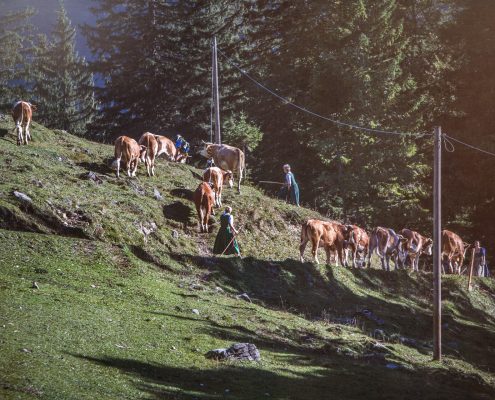
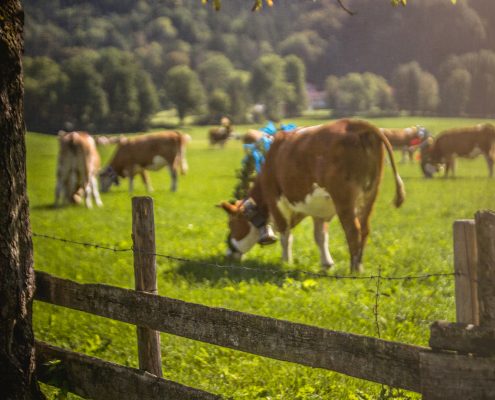
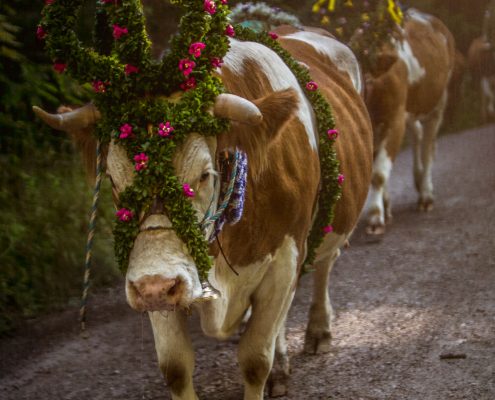
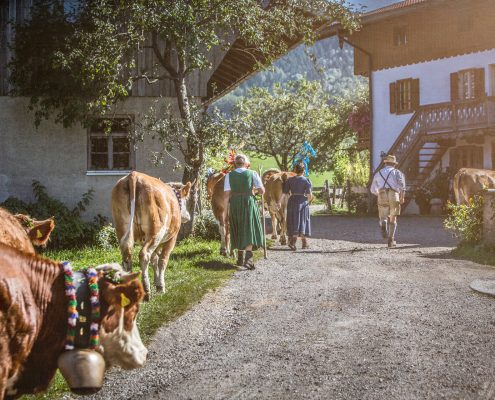
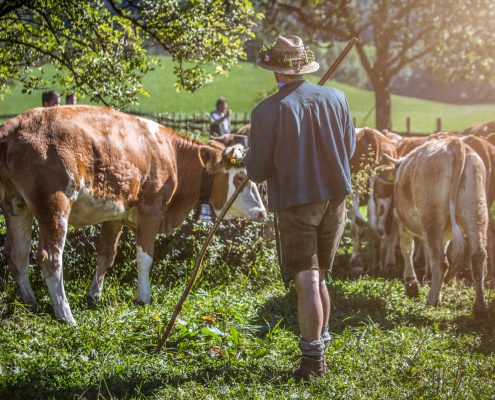
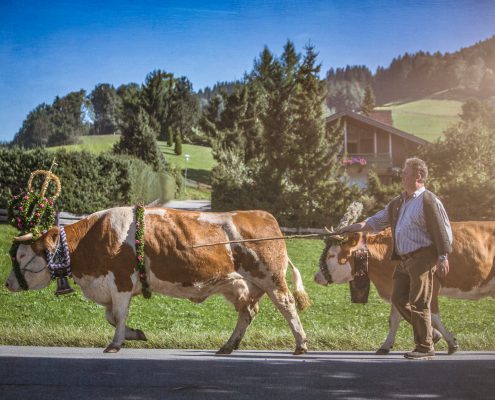
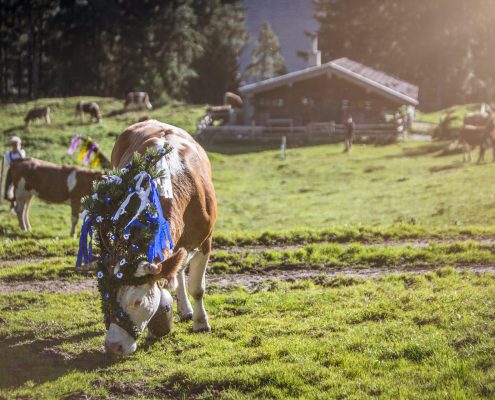
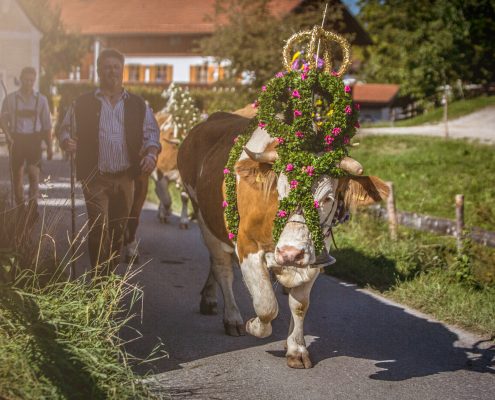
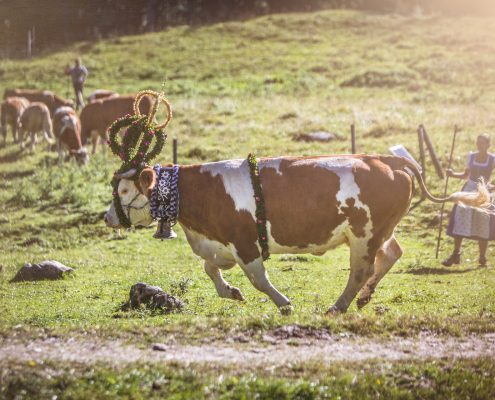
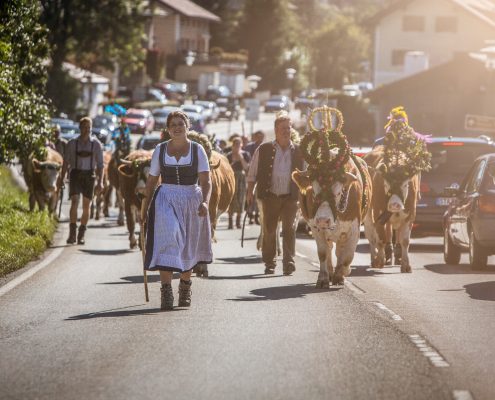
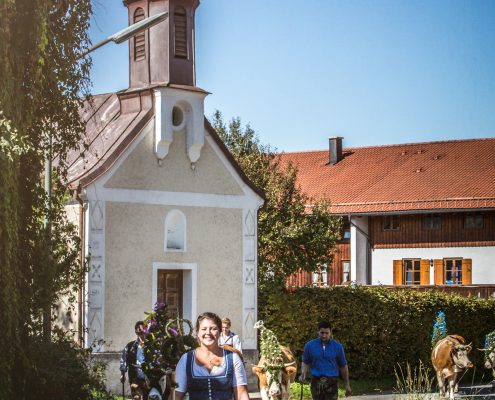
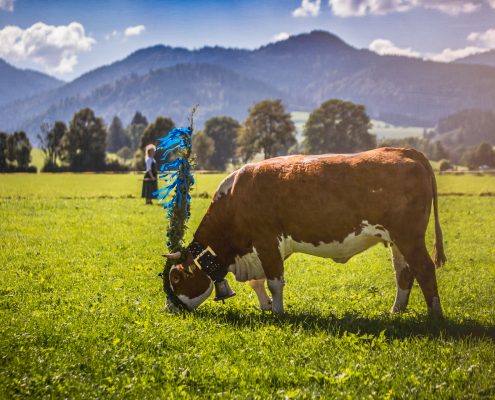


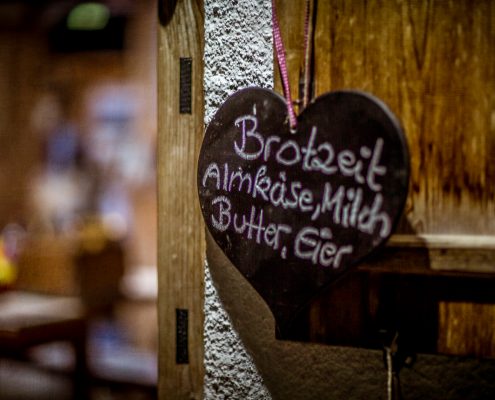
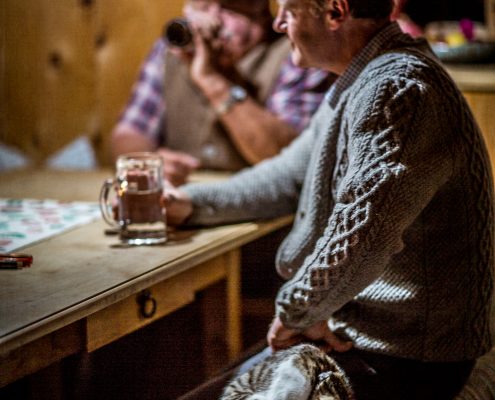
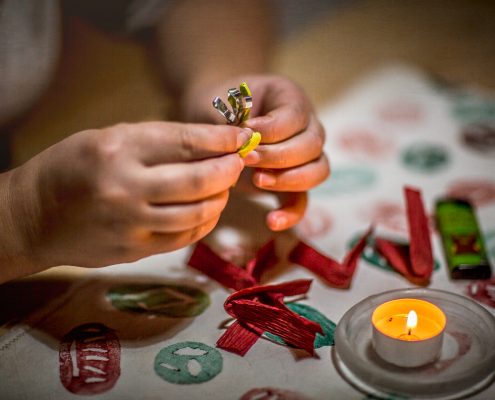
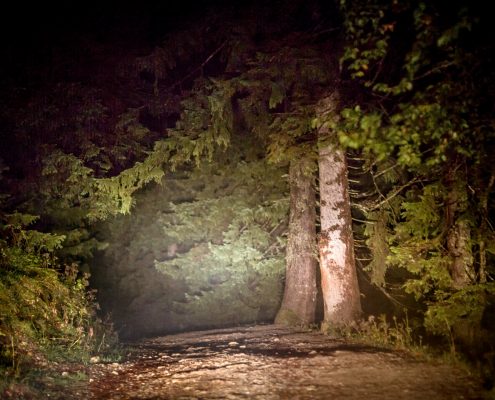
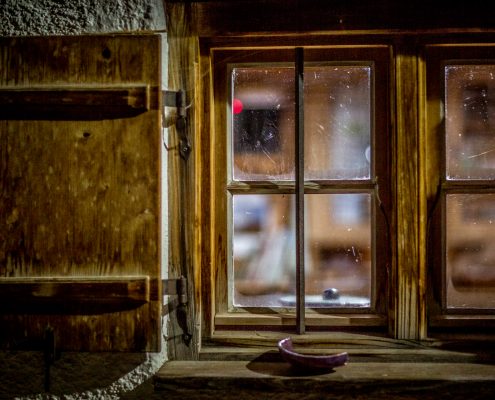
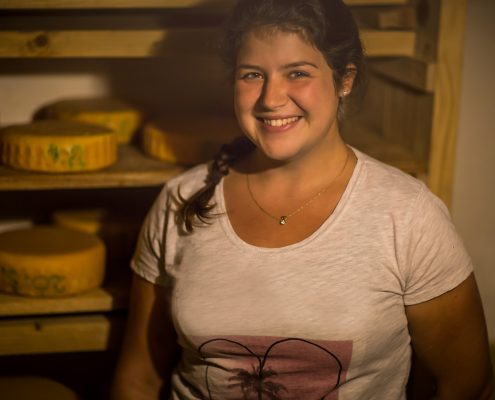
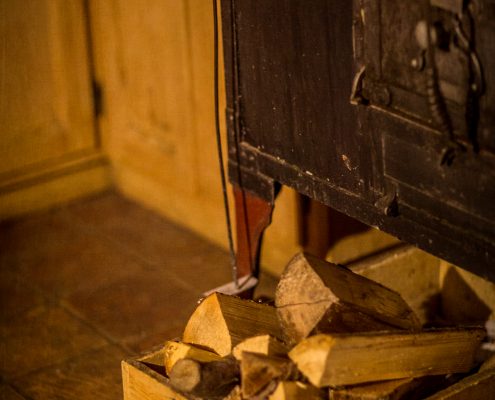
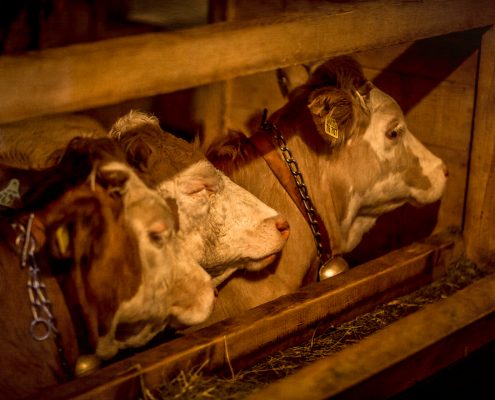


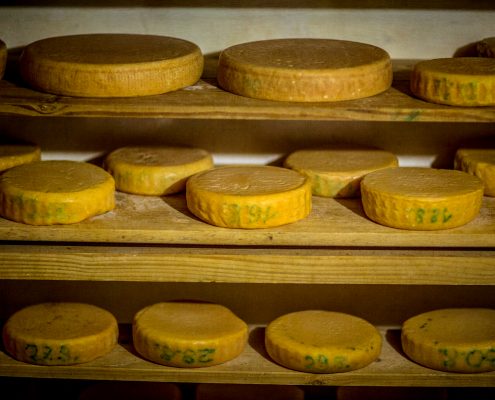
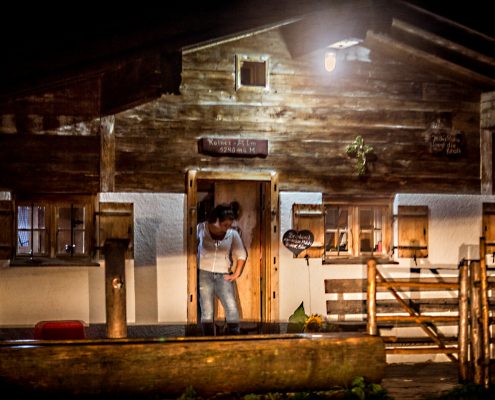
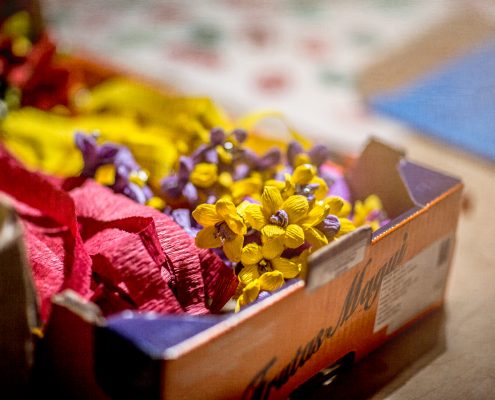
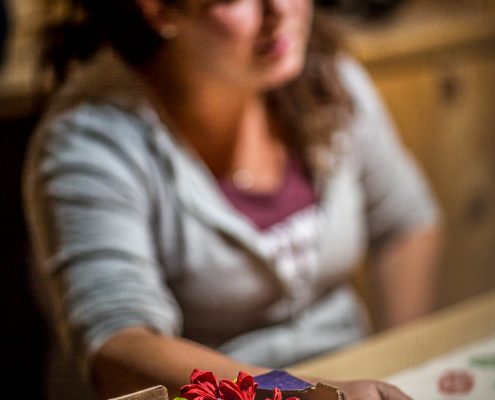

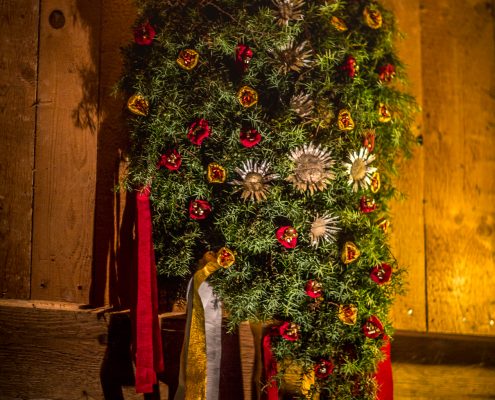
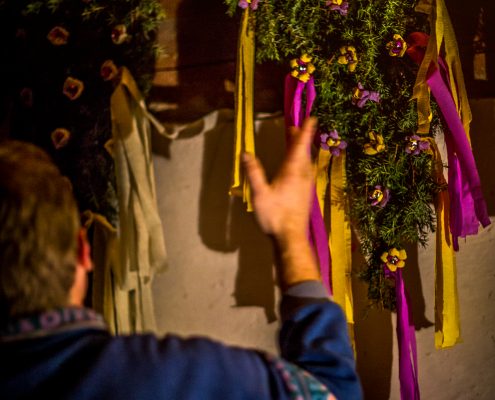
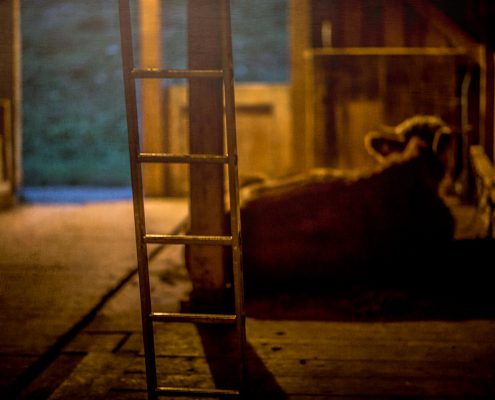
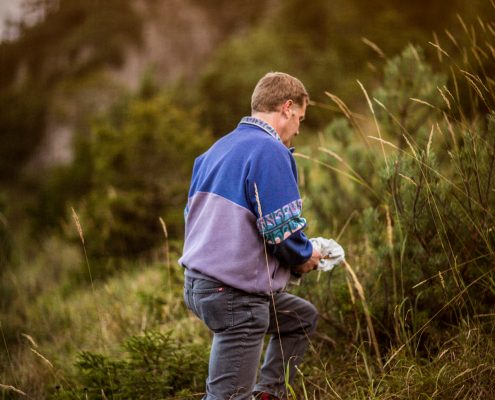
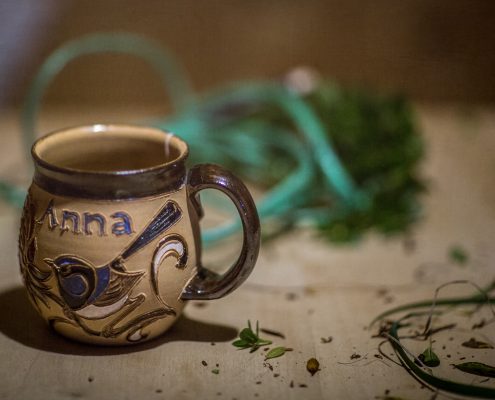
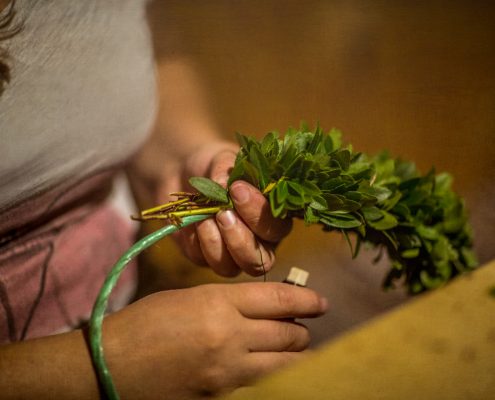
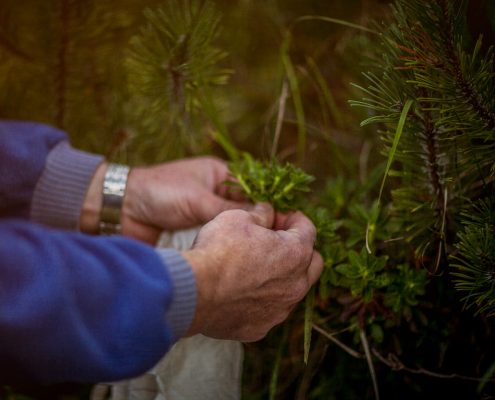
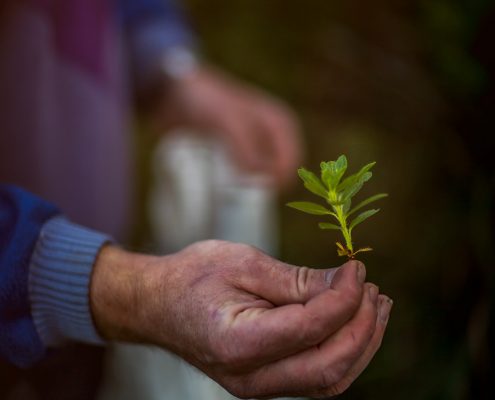
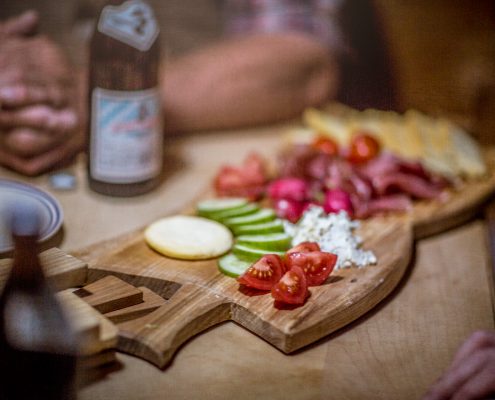
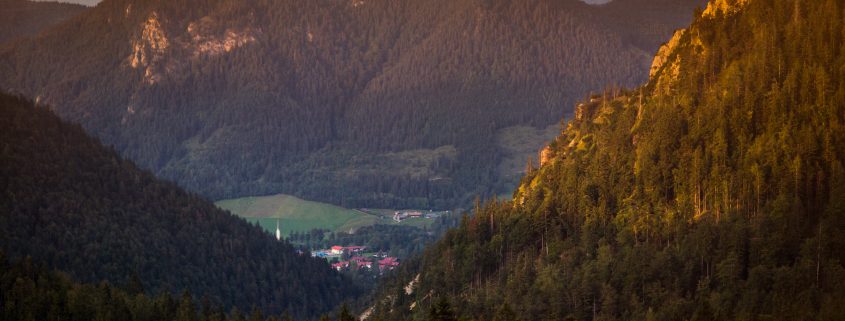
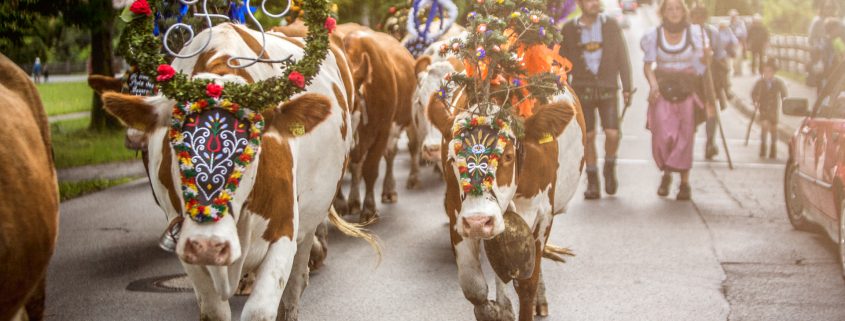
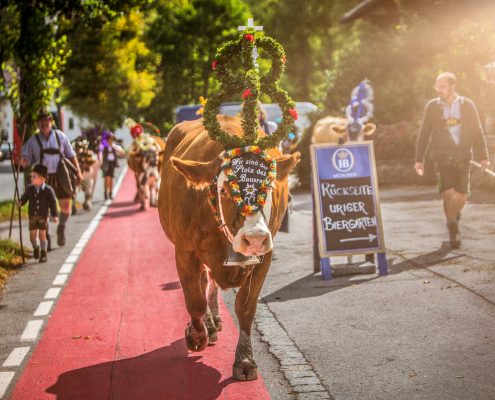
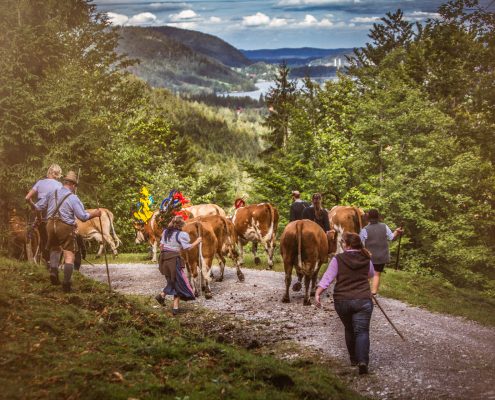
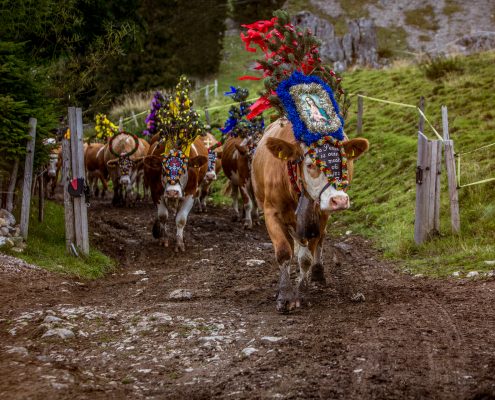
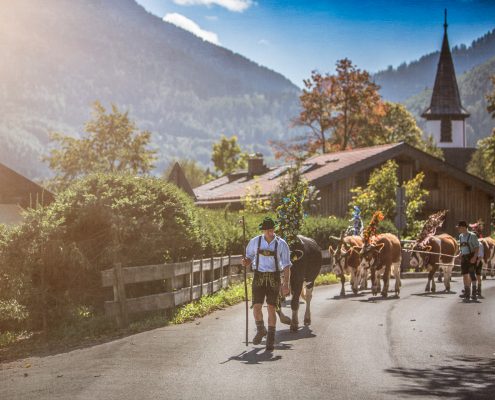
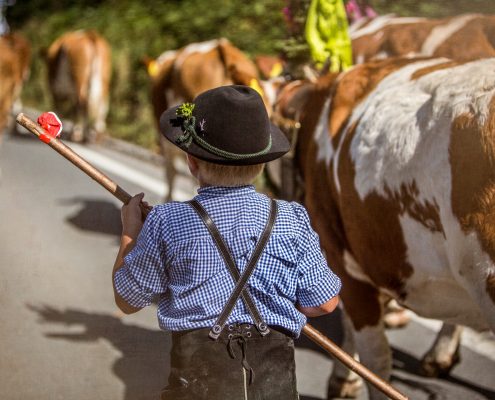

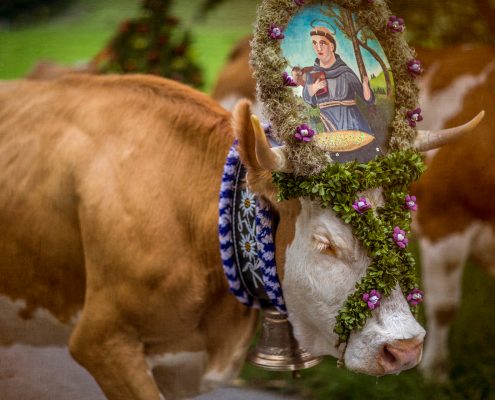
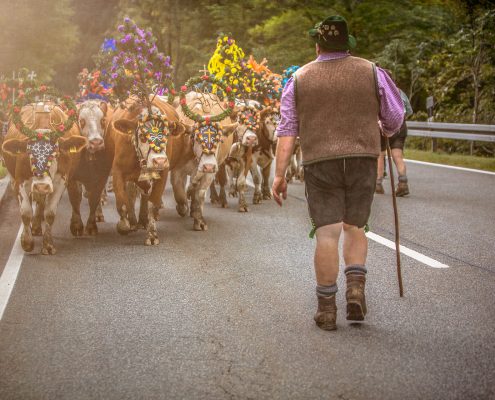
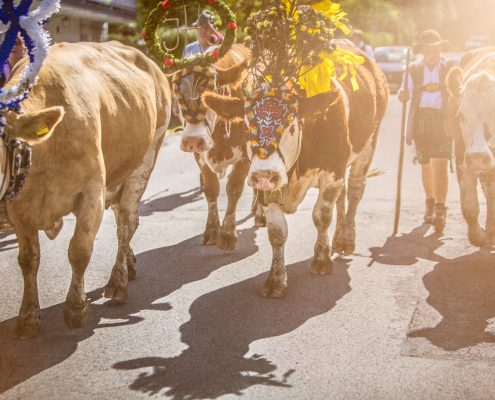

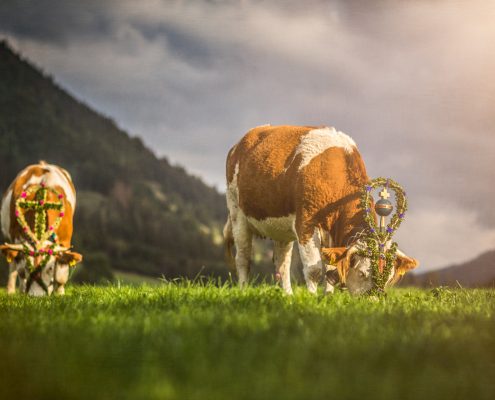
Du muss angemeldet sein, um einen Kommentar zu veröffentlichen.